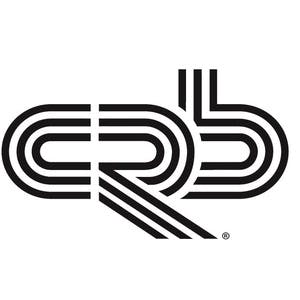Temperature Controls in Food Manufacturing Facilities: Ensuring Optimal Quality, Safety, Efficiency and Sustainability
In the intricate world of food manufacturing, where precision and consistency are paramount, temperature control emerges as a critical factor that significantly impacts product quality, safety, and overall operational efficiency.
With far-reaching impacts, food processors must delve into the multifaceted realm of temperature controls, navigating the nuances of facility design, equipment selection, advanced controls, optimization strategies and sustainability. What do processors need to know about temperature controls in food manufacturing facilities? Read on for insights from CRB’s team of specialists.
Use the following links to navigate to specific topics in the conversation:
- Facility design and layout considerations
- Impact of equipment selection
- Fine-tuning temperature controls
- Optimization for efficiency and sustainability
Facility design and layout considerations
Food manufacturing facility design has a significant influence on temperature management. Building features such as insulation, layout, zoning and airflow dynamics play critical roles in temperature consistency. The segregation of spaces, such as keeping baking zones distinct from freezing areas, ensures that temperature fluctuations are minimized, thereby preserving product quality and safety.
Design and featuresWhy are facility layout and zoning critical to temperature controls? What factors should processors consider when planning layout and zoning?
“When planning a facility, the temperature-controlled zones must be planned with two main objectives in mind: energy efficiency and food safety/quality. Energy efficiency is enhanced when the temperature-controlled units don’t open directly to areas that open to the exterior, especially in the summer as these temperature differences can result in excessive energy use and condensation build up. Regarding safety and quality, proper planning will help in preventing contamination from reaching the cold areas, as well as to avoid temperature swings that can foster growth of microorganisms or condensation that might lead to a deviation from GMP.”
What building features most impact temperature controls?
“The R-value of the surrounding building elements (walls, doors, etc.) is key to controlling temperatures within any facility. Temperature differentials between adjacent spaces should also be taken into account in facility layout to minimize potential issues that could impact temperature control. The use of airlocks into very low or very high temperature-controlled rooms helps to reduce the potential for significant temperature drops when entering or exiting these spaces, particularly with large openings for forklift traffic.”
Dennis Collins, AIA
Discipline Leader, Architectural
Zoning
Maintaining the correct temperature ranges throughout your facility requires planning, design and appropriate equipment. When designing a new space, avoid a freezer full of finished product adjacent to a hot kitchen full of steam-heated kettles. If limitations in an existing facility create adjacent spaces with stark temperature differences, processors will need proper transitions and careful control of airflow between them.
How do you zone HVAC systems and determine methods for temperature control?
“When planning the facility and zoning the HVAC systems, spaces with similar use, function, temperature and humidity requirements, occupancy, and exterior exposures are grouped together into temperature control zones.
“Each of these zones is assigned a method of temperature control and assigned to a primary HVAC system (these being air handling units, rooftop units, or split systems). Each zone is designed to use some sort of cooling capacity control if appropriate. Some zones will not be appropriate for air volume changes. Airflow supply air volume may be controlled by a variable air volume box, a constant volume box, an airflow control venturi air valve, airflow control damper, controlled air diffusers, etc. If required, a zone level reheat method utilizing either steam, hydronic, or electric reheat may be used.”
Andrea Phillips, PE
Mechanical Engineer
What types of systems are used to maintain temperatures in each zone?
“Refrigeration systems used to maintain space temperature in food production facilities are often mechanical vapor compression refrigeration systems. This technology is mature and used significantly, starting in the 20th century.
“Holistically, the basic system consists of compression equipment, condensers, evaporators and expansion devices. The range of system configurations and exact technology used varies widely depending on the size of rooms and process equipment that requires refrigeration and the facility’s region.
“These systems can range from packaged roof-top condensing units serving fan coil evaporators in the space to full industrial refrigeration engine rooms serving multiple types of cooling equipment.
“Refrigerated room temperature and humidity requirements are often maintained with the use of fan coil evaporators, air handling units, exhaust fans or a combination of this equipment. Space conditions are affected by the facility design, code requirements of the room, product requirements, facility quality assurance determined characteristics, process operations and several other factors. These considerations must be evaluated to determine the proper equipment selections for the space.”
How do you maintain temperature segregation between the different zones in a food manufacturing facility?
“Primary cooling equipment generally utilizes some sort of HVAC air supply unit – commonly air handling units, rooftop units, or split systems. These utilize either direct expansion air cooled condensing systems coupled with evaporator coils operating with various refrigerants (including ammonia) or a hydronic cooling coil with a heat exchange fluid such as a propylene glycol solution or water.
“Heating systems can be small local systems such as unit heaters (which may be steam, hot water, electric, or natural gas heating), zone based such as VAV airflow control boxes with reheat coils (steam, hot water, or electric reheat), or system based at the air handling unit, rooftop unit, or split system which could be steam heating coils (with or without integral face and bypass damper), hydronic heating coils, electric heating coils, or natural gas heat exchangers.”
Andrea Phillips, PE
“Identifying individual room requirements for temperature and humidity is a critical first step. Working with the mechanical engineer, the architect can then identify the building components required to create the proper room environment with selections for walls, ceilings, doors, etc. Another important discussion is regarding the intended use of the space including location within the facility, type of access required and frequency of entry/exit. This information is used to determine if airlocks or pressure differential exchange rooms will be utilized in the facility layout.”
Dennis Collins, AIA
Building materials
In the world of cold processing, where maintaining lower temperatures is essential, building materials can have a large impact. For example, insulated metal panel (IMP) enclosed processing lines emerge as a game-changer. These panels provide insulation, creating an environment where temperatures are meticulously maintained.
Are there specific segments or applications within food and beverage where you see IMP being particularly successful? What other materials have emerged as game-changers for temperature controls?
“Any cold manufacturing process or where final products are refrigerated benefits by using insulated metal panels (IMP) for walls and ceilings. IMP is an ideal building product for these applications as manufacturers offer a wide variety of panel thicknesses with varying R-values that can be tailored to the required use. In food manufacturing, IMP is also a preferred material in that it eliminates cavity wall construction typical in other types of partitions.”
Dennis Collins, AIA
Beyond IMP, what other building materials can significantly impact a food manufacturer’s ability to maintain tightly controlled temperature ranges (i.e., roofing materials, door types)?
“Insulated doors, both for personnel and high-speed roll-up doors, are essential components of any critically controlled temperature rooms such as freezers. The frequency of the use of large door openings for forklifts can cause significant temperature swings within a cold room.
“Air curtains at door openings are another item that can be used to minimize the impact of opening the doors.
“Locating critically controlled spaces to the interior of the building instead of on an exterior wall can be a benefit. Insulated IMP ceilings suspended below the primary building roof create a box-within-a-box approach for a critical temperature room.”
Dennis Collins, AIA
Impact of equipment selection on temperature controls in food manufacturing
Selecting the right equipment is paramount in achieving precise temperature control within a food manufacturing facility. The selection process hinges on the unique requirements of various stages of production, coupled with facility and operating requirements. Refrigerated equipment ensures that products are stored at temperatures just above freezing, preserving freshness. Conversely, frozen equipment safeguards products that require extended shelf life. This equipment selection isn’t just about maintaining temperatures; it’s about adhering to strict regulatory standards that govern food safety.
What critical factors need to be considered when choosing process equipment?
“The primary function of the equipment must be understood and capacity needs must be determined. Is this cooking for texture, killing microorganisms, or freezing for long-term storage? What is the monthly goal for production? What utility sources are available?
“With its purpose known, safety concerns of public health and operator safety must be addressed. You must understand the nature of the product, its physical properties, and where it is in the process. Does the product easily spoil? Is it sticky? Is it exposed or in a container? Is this before a microorganism kill step? These features dictate the demands of cleaning and inspection.
“Then, operator needs are balanced with function. Are belts open enough for cleaning, and how are operators kept from getting pinched? Is product in tubing and would direct contact with the tubing injure operators?
“It’s critical to first understand and define your process and equipment, and then carefully plan the facility and environment around it.”
What systems are needed to support process equipment heating and cooling needs?
“The systems used to support the process equipment are generally the same as those used to support the space conditioning equipment. In large systems, it is often most cost effective to design all process and space conditioning into the same machinery room. In smaller and medium systems, it may be that a segregation of machinery equipment into each respective zone is the cost-effective approach.
“Some process equipment is an exception to this rule, such as direct impingement cooling tunnels where the products are in direct contact with the primary refrigerant, which is often liquid nitrogen.”
Jon Clark, PE
Fine-tuning temperature controls in food manufacturing
Advanced temperature control systems have ushered in a new era of precision and automation. These controls are multifaceted and encompass numerous aspects:
Food safety and temperature zones
The significance of maintaining precise temperature zones cannot be overstated. A slight deviation can lead to bacterial growth, compromising product safety. Adhering to temperature regulations is paramount not only for the sake of consumer health but also for regulatory compliance.
What is the significance of deviations outside the temperature zone? When should a manufacturer be worried?
“Temperature deviations in controlled areas can lead to condensation or provide conditions that support microbial growth. Condensation must first be controlled, as the presence of liquid water supports the growth of microorganisms.
“Temperature deviations become problematic when they are either systemic (observed often) or last for a long time. Manufacturers should monitor not only the room temperature, but also the effect it has on the products that are stored or processed. The product must be closely watching if its temperature deviates and is outside of the safe temperature zones as described in the food safety plan.”
Pablo Coronel, PhD
No system is perfect. How can manufacturers be alerted if the system deviates from the desired temperature, and be ready to bring it back in line?
“A building management system (BMS), overseeing control of all HVAC and mechanical utility equipment, can be programmed to monitor all set points and operating conditions of monitored equipment. When the equipment fails to run or set points are not maintained the BMS is capable of calling, texting, and emailing alerts to responding maintenance personnel to investigate and troubleshoot.”
Andrea Phillips, PE
“The smarter you can make the system, the better it can perform. Watching rate of change and deviations from setpoint can allow you act before the temperature falls outside of norm. Also, if you know what conditions (doors opening, shift changes) can affect the consistency of the temperature controls, you can proactively react to these conditions, either with additional sensors or model-based solutions. You may also have secondary, or make up systems, that only come online in the event of an upset to more quickly bring temperatures back into nominal ranges.”
Dynamic utility management
Your production facility is a dynamic environment. Temperature controls have to adapt to your different phases of operation, as well as different facility uses. As doors open, or processing heats up, these controls dynamically adjust cooling mechanisms to counterbalance temperature deviations. Beyond production, temperature controls extend to the cleaning phase. Shutting off utilities during cleaning not only prevents energy wastage but also ensures that cleaning is conducted optimally, thereby maintaining hygiene standards. This adaptability helps maintain consistency in the production environment.
What environmental systems (i.e., HVAC) might benefit from different operation during production, compared to cleaning or facility downtime?
“In addition to sensors as mentioned above, HVAC systems may be programmed to respond to various operational schedules. Examples include utilizing exhaust fans during hose down/wash down activities as a method to control the spread of humidity in a facility and setting temperatures for night or unoccupied modes to conserve energy. HVAC system components impacted include primary airflow equipment such as air handling units, rooftop units, split systems, exhaust fans, pumps, and ventilation intakes.”
Andrea Phillips, PE
What utility systems might benefit from different operation during production, compared to cleaning or facility downtime?
“There are utility systems that are relatively simple to shut down during cleaning or downtime and there are others where shutdowns carry a higher opportunity cost.
“During cleaning or downtime periods, the simplest utility systems to turn off are typically compressed air and vacuum systems. These systems do not have significant ‘collateral loss’ when shutting down. These systems can be deenergized by stopping the associated blowers or compressors and slowly relieving pressure. For industrial applications, these blowers and compressors are designed to be flexible for weekly shutdowns and best practices can help to mitigate cycling concerns (e.g. opening drain lines so condensation can freely drain).
“Conversely, there are utility systems where there is a relatively high collateral loss whenever there is a shutdown. These types of systems are typically steam, chilled water, clean-in-place (CIP) wash systems, and specialized water systems (e.g. WFI). These are systems that should only be shut down if direct maintenance is needed on the equipment or if the facility shutdown is going to be more than a few days.
“Specifically for steam systems, special steps are needed in order to protect the boiler(s) and steam distribution system during extended shutdowns. There is a myriad of layup procedures based on steam system size but they can include ambient air purge, nitrogen purge/blanketing of the distribution system, or putting (removable) desiccant into large vessels (e.g. deaerator).
“Anytime you deal with elevated pressures and temperatures, thermal cycling should be avoided in order to prevent premature failure of system components. The adverse effects of thermal cycling raises the collateral loss of shutting down steam systems.
“A subtle item that should be considered when shutting down utility systems during cleaning or downtime is interdependencies. Many facilities use compressed air for hose reel service drops, pneumatic actuating valves, and supply to processing/packaging equipment. Operators and facility engineers need to closely evaluate what other systems would be impacted by the utility system they are planning to shut down.
“Lastly, manufacturers should always keep safety in mind when coordinating short or long shutdowns. Anytime the decision is made to keep a system online during cleaning or shutdown in certain areas, it is critical to include that information in the daily shift meetings so that operators/cleaning staff know that the (e.g.) steam system is still on. Lock-out/tag-out (LOTO) procedures are not exclusive to electrical systems; they can be applied to utility systems as well.”
Aaron Kilstofte, PE
Mechanical Engineer
What strategies can manufacturers use to maintain desired temperatures as conditions change throughout the facility?
“Using advanced control logic such as multivariable control with feedforward bias can significantly improve the performance of HVAC and process temperature control. Monitoring various external and internal environmental conditions such as humidity, wet bulb temperature, and light intensity in addition to dry bulb temperature will allow the automation to more tightly control the facility temperatures.”
Monte Vander Velde, PE
Project Manager
Dehumidification for product preservation
Excessive humidity can wreak havoc on product quality and even pose a food safety risk. Excess humidity can create favorable conditions for mold and other microbial growth and undesirable texture changes. Dehumidification systems can be used both in processing and storage areas, creating an environment conducive to product preservation.
How can a manufacturer determine what humidity conditions could adversely affect food quality and safety? Are there other ways to control humidity, besides dehumidifying a room?
“The humidity conditions of each area must be determined based on the products that are stored or processed. In general, lower humidity (40-60%) is preferred to avoid the risk of condensation and prevent growth of microorganisms. However, in high humidity areas good ventilation helps prevent both.
“As room temperature decreases and in refrigerated process and storage areas, the use of air conditioners or dehumidifiers is necessary. In these scenarios, the use of airlocks to enter and exit the refrigerated spaces helps control the environmental humidity.
“Some products require a narrow range of humidity before they either dry or shrivel due to it being too dry, or begin to spoil due to too much moisture.”
Pablo Coronel, PhD
Are there other ways to control humidity, besides dehumidifying a room?
“Two common control strategies to dry a space without using desiccant dehumidification are:
- Local capture of sources of high humidity (an example might be an open-top cooking vessel that generates heat and humidity) using a local exhaust intake or capture hood and ventilating the space to make up for the additional exhaust.
- Sub-cooling the supply air at the primary HVAC air supply system (air handling unit or rooftop unit) to drop more moisture out of the supply air using the primary cooling coil then using a reheat method such as hot gas reheat or a wrap-around heat pipe to reheat the supply air. The goal would be to run the primary conditioning system longer and have a higher distribution of air volume at a slightly higher temperature than normal with a lower relative humidity.”
Andrea Phillips, PE
Optimization for efficiency and sustainability
Efficiency and sustainability go hand in hand when it comes to temperature controls in food manufacturing facilities. Optimizing operations leads to reduced energy consumption and a smaller carbon footprint. Temperature control optimization aligns operating efficiency with sustainability objectives on multiple fronts:
Utility optimization
Embracing energy-efficient systems and practices is a double win. By employing smart temperature control algorithms and efficient HVAC systems, manufacturers can achieve a delicate balance of consistent temperatures and reduced energy consumption.
What technologies should manufacturers consider to improve the efficiency of their HVAC systems?
“There are multiple scenarios where technologies may improve HVAC efficiency. Some applications to consider include:
- In areas where tight temperature or relative humidity control are not required and occupant or worker comfort is the only reason to condition a space, rather than conditioning the space for all heat loads consider using spot cooling blowing directly onto worker locations to keep workers comfortable regardless of the greater room conditions.
- Use the highest efficiency equipment available and upgrade to the newer non-hydrochlorofluorocarbons (HCFC) refrigerants.
- Use energy recovery when appropriate. This can be a heat pipe system, run-around loop energy recovery coils, or energy recovery wheels to recover waste energy from exhaust systems and pretreat ventilation air.
- Use variable capacity unloading compressors in all direct expansion air-cooled equipment.
- Use variable frequency drives (VFDs) on all fans and pumps.
- Use fan arrays for air supply in air handling units or rooftop units sized for N-1 use so one fan can fail but the system can still run and maintain set points. These systems operate at much lower combined brake horsepower (BHP) than a single larger fan.
Use heating and reheating methods that have modulating control such as modulating hydronic heat and reheat, modulating steam heat and reheat, or silicon-controlled rectifier (SCR) controlled electric heat and reheat.”
Andrea Phillips, PE
“Manufacturers do not have to lean exclusively on high capital, long-lead time technologies to address efficiency issues of their utility systems. There are smaller scale technologies and periodic operational practices that can have tangible impacts on utility system efficiency.
“Efficiency of chilled water systems can be improved by simple things such as a chilled water storage tank (aka a buffer tank). This low-tech method allows operators to take advantage of the lower ambient temperatures at night and less expensive electric utility rates to build up a reservoir of chilled water in the tank. This reservoir of chilled water relieves the pressure from the air-cooled chillers from having to run during hotter daytime periods. Other types of thermal energy storage systems such as ‘ice tanks’ are being looked at more frequently by food manufacturers due to their small footprint and operational simplicity.
“Even for utility equipment like air cooled chillers simple things like spacing (i.e., the space between the air-cooled chillers) can lead to a 5-10% derate if not accounted for. Air-cooled chillers intake air through the sides of the units and expel warm air vertically. OEM’s have derate curves for air-cooled chillers based on their proximity to each other and to obstructions like walls. Air-cooled chillers should be spaced as far apart as possible to avoid derates. Additionally, even changing the startup/shutdown order of the chillers can be an option to improve efficiency of the air-cooled chillers. This change is as simple as a facility modifying their standard operating procedures to start the chillers spaced furthest apart first, then the next furthest apart and lastly the ones that are right next to each other.
“In terms of lower barrier to entry and broad applicability, variable frequency drives (VFDs) are standardized and reliable components that can help cycle down fans/pumps during low utilization periods. Operators typically like to lower the ‘min load’ of a pump/fan and to have it run (at min load) through short cleaning periods/downtimes (instead of shutting it off completely) because it avoids another shutdown/startup procedure which requires multiple steps and extra personnel to perform safely.
“Another low barrier-to-entry tactic is adding insulation to utility systems. The difference can be tangible for steam/condensate systems as well heating hot water and potable hot water systems. Facilities can purchase a simple infrared camera or temperature sensor to survey their distribution system to find hot spots where insulation repairs are needed.
“A simple and highly flexible technology for improving the monitoring and efficiency of utility systems are wireless, thermoelectric powered sensors. These components use the thermoelectric effect (i.e., electric charge generated by a temperature gradient) to power and operate remote sensors. These sensors can be useful in applications where monitoring is needed in an area to avoid utility losses but running wire/conduit is expensive or impractical. No power is required to operate the sensors and they can communicate wirelessly to the facility control system.
“There are additional periodic operational practices that can help improve utility system efficiency. Examples of these practices include:
- Static leak tests for compressed air and vacuum systems
- Infrared camera/thermometer surveys for steam/condensate systems to find hidden hot spots (i.e., insulation failures) and checking the fill material and drift eliminators in your cooling towers to assess if excessive fouling or plugging is occurring.
- Checking and maintaining steam traps. A failed steam trap means either water is accumulating in the steam system or valuable steam is dumping to drain constantly.”
Aaron Kilstofte, PE
How can you optimize the function of systems together within your facility? For example, how could you minimize systems that simultaneously call for hot and cold water?
“Temperature control can be difficult for traditional proportional, integral and derivative (P&ID) control due to the significant lag involved in many temperature control applications. Using advanced control scenarios and mapping the various temperature interactions can minimize temperature process upsets due to system-to-system interactions. New advancements in advanced process control and AI (self-learning) can result in overall better temperature control at the individual loops, within systems and within the overall process.”
Monte Vander Velde, PE
Investment and design validation
Controlling the temperature of facilities and equipment requires efficient heat transfer. Understanding how this occurs at large scales, including air circulation through your facility, during mixing in a large vessel, or convection in a large oven, can be difficult. Fortunately, the realm of temperature control can be supported by advanced technologies such as computational fluid dynamics (CFD). CFD simulations ensure that spaces maintain uniform temperature distribution, airflows are optimized, and investments like HVAC systems can be validated.
When is it best to use CFD to design equipment or validate potential investments? In what situations may the ROI not be as good?
“CFD is a great tool to validate the HVAC or equipment design especially if the design is atypical, the risk to product quality is too great, or the capital expenditure is high that you cannot risk a sub-optimal design. Also, temperature control in large spaces like warehouses is tricky and often requires destratification fans. CFD helps in the optimal selection and placement of these fans.
“Vertical grow farms are huge spaces where the temperature, relative humidity and air velocity requirements depend not only on what plant is growing but also its stage of development from sapling to mature plant. CFD is frequently used to help validate and optimize these challenging designs.
“The results you get out of CFD are only as good as the information you feed it. When you don’t have good information either backed by experimental data (e.g., a new agitator design) or validated in the industry (e.g., turbulence models) then the results from CFD will not be reliable.”
Warehouse storage efficiency
Automation and automated guided vehicle (AGV) systems can play a pivotal role in enhancing cold warehouse storage efficiency. By minimizing human intervention, these technologies significantly lower utility demands, optimizing energy consumption and cost-effectiveness. Furthermore, this reduction in human activity ensures precise temperature control, minimizing temperature fluctuations, and subsequently safeguarding the integrity of stored products, all while enhancing safety by mitigating potential personnel exposure.
What type of AGV investments offer the quickest or greatest ROI?
“Automated guided vehicles (AGVs) or autonomous mobile robots (AMRs) provide a wide range of benefits. This includes high reliability/quality, the ability to work around the clock, and adaptability to scale and throughput. Manufacturers are facing difficulties finding workers across the board. Introducing AGVs/AMRs for repetitive material handling tasks can ease some of this burden. Moreover, deploying AMRs can provide a safer work environment.
“In addition to potential labor avoidance, there are other financial benefits with an automated system. Temperature controlled storage areas utilizing automation can provide high density storage arrangements, which reduces the energy requirement to condition the space (especially significant for cold/freezer applications). The number of door openings and the amount of time they are open can be minimized with automation to further reduce energy consumption.
“A material movement and storage analysis of the operation provides a data-driven approach to help facilities identify the right level of automation based on operational metrics and business drivers while justifying a potential return on investment.”
Temperature controls: Ensuring optimal quality, safety, efficiency and sustainability
Temperature controls are a cornerstone of food manufacturing facilities, influencing product quality, safety, efficiency and sustainability. By carefully considering facility design, selecting appropriate equipment, implementing advanced controls, and optimizing operations, food manufacturers can create a controlled environment that safeguards their products and the environment. As the industry continues to evolve, embracing innovative temperature control solutions will be instrumental in meeting regulatory standards, consumer expectations, and sustainability targets. Let’s talk about how to fine-tune your temperature controls.











